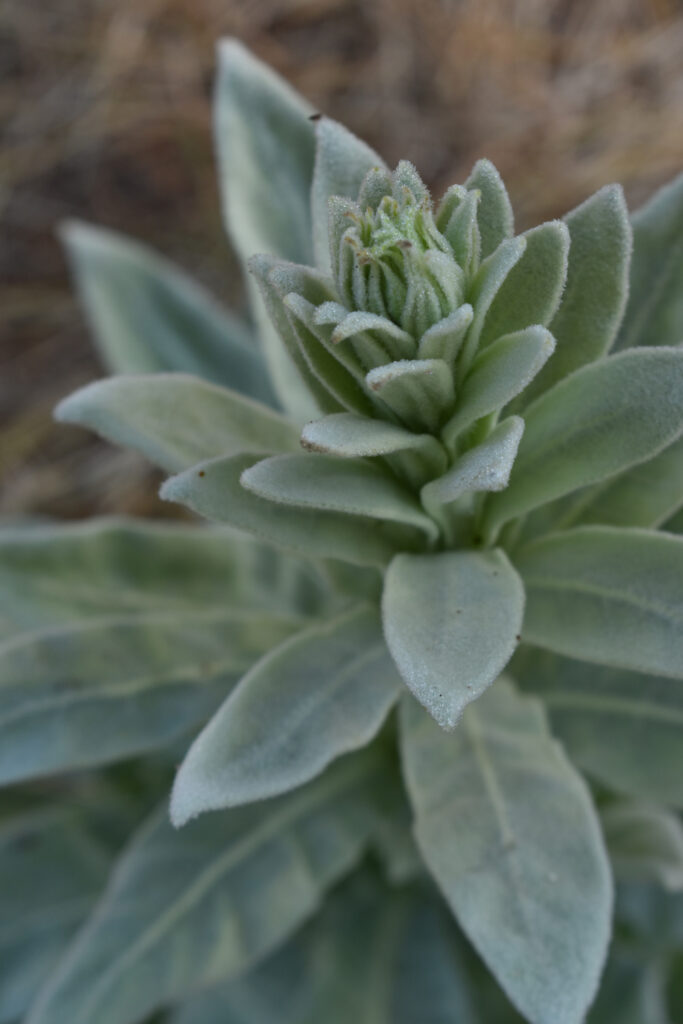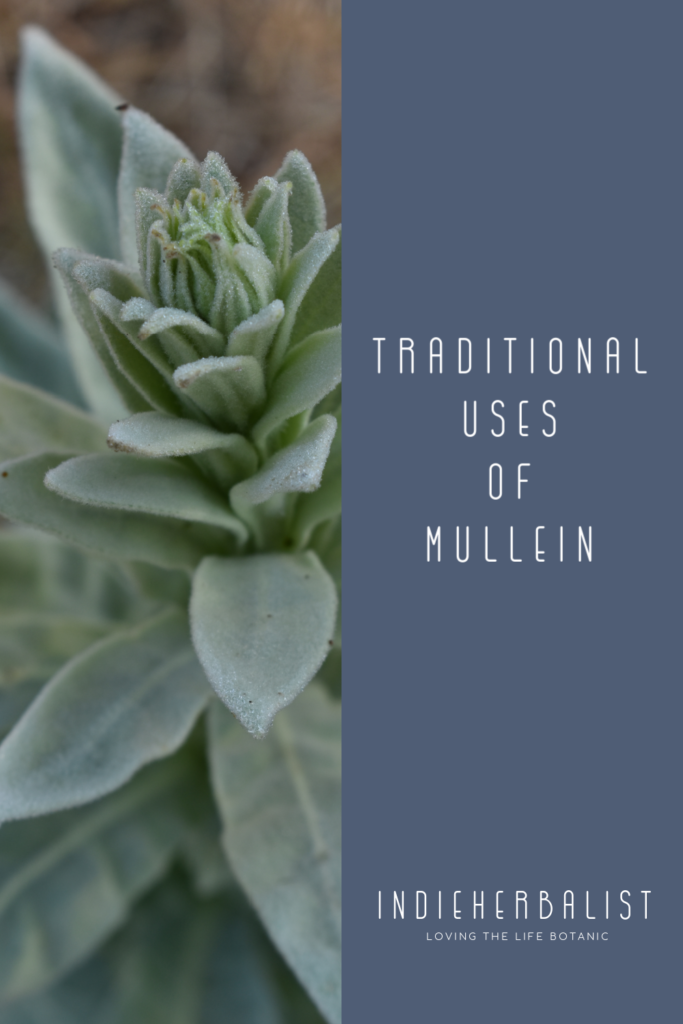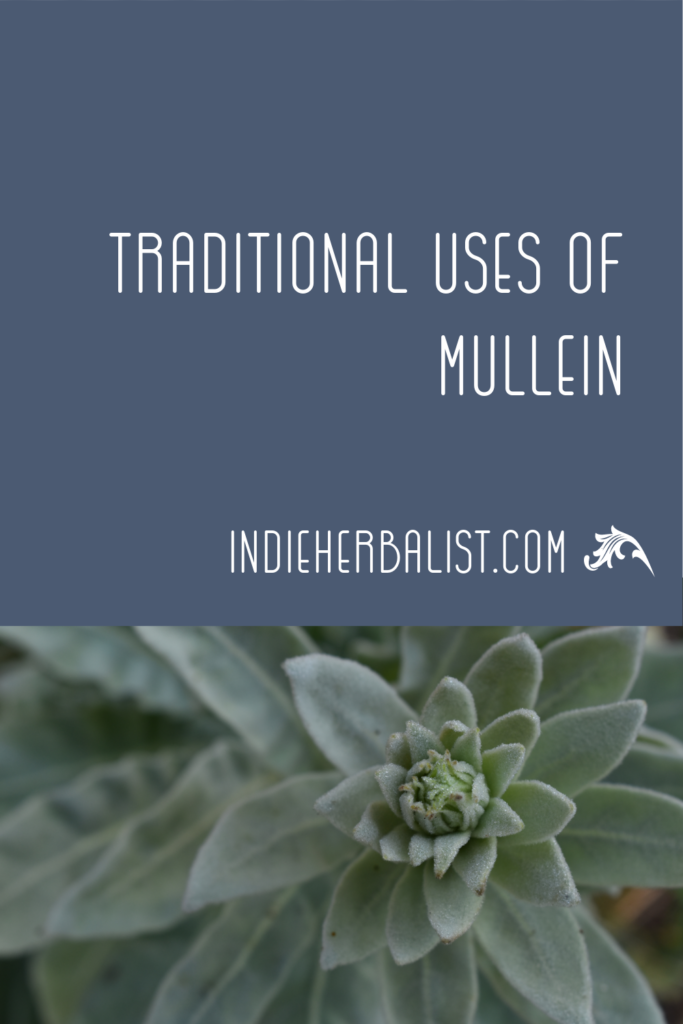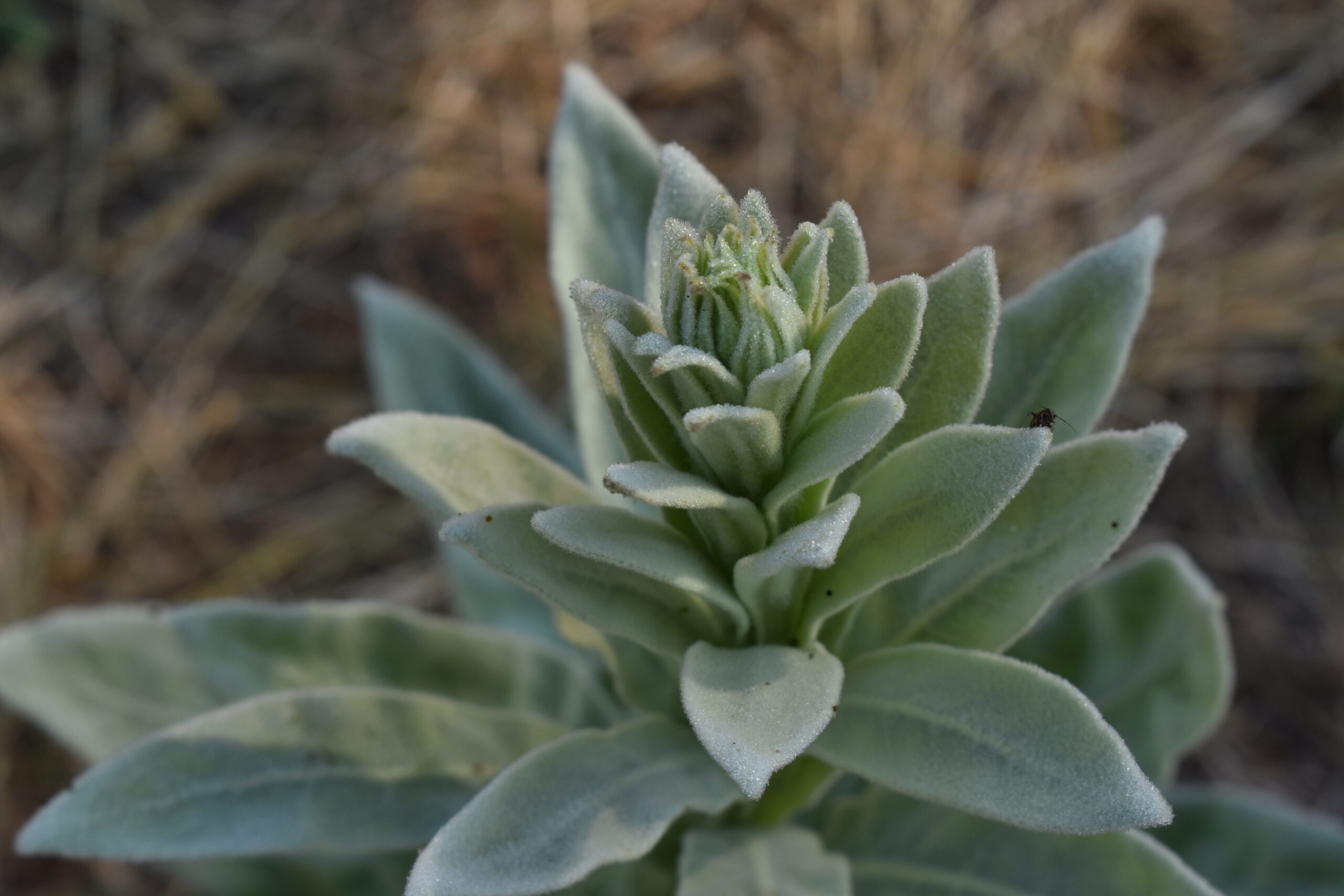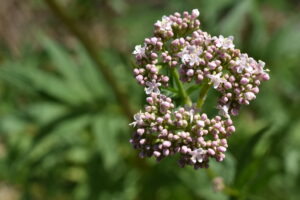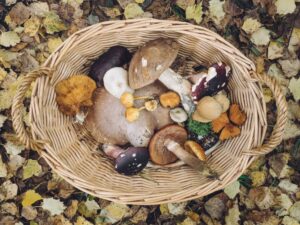Links contained in this post and elsewhere on my website may include affiliate links. When you make a purchase through these links, I earn a commission at no additional cost to you. I only link to products and services that I love - and that I think you will love, too!
Mullein (Verbascum thapsus) is a stately presence along roadsides and in the herb garden in the summer and fall. Its thick, soft leaves and yellow flowers draw attention and invite curiosity. Traditional herbalism has passed down many mullein uses for modern herbalists to learn as they connect with this plant.
The useful parts of mullein
Mullein flowers, leaves, and roots are all useful either fresh or dried. Typically, the dried form is most readily available. Dried mullein leaves should be soft and greyish green in color. Mullein flowers stay bright yellow when properly dried. Faded, brown, or moldy flowers or leaves aren’t wholesome. It’s fine to put old mullein in a compost pile or sprinkle it around a garden instead of throwing it in the trash.
An overview of mullein uses
In traditional herbalism, mullein is especially useful for the respiratory system, the nervous system, and the musculoskeletal system.
It’s most common to find mullein as an infusion (also known as a tea) or as an alcohol-based extract for internal use. Mullein infusion is best prepared in a tea bag or filtered through a coffee filter or muslin. The leaves are covered in soft hairs that are irritating to the mouth and throat, but straining the tea makes it more pleasant to drink.
Mullein is also a soothing topical ingredient when prepared correctly. The infused oil is a useful topical on its own and as a base for making salves.
How much mullein to use?
According to herbalist David Hoffman, 2 teaspoons of dried leaf or flower per cup of hot water makes a serving of infusion, which is used three times a day. For an extract, he states that 2.5-5ml can be used per serving up to three times a day. His recommendation is a 1:5 extract in 40% alcohol.
I prefer using 2 tablespoons of dried herb per cup of water- and make sure you strain it through a coffee filter! Mullein has lots of soft hairs covering the leaves and flowers that make for an unpleasant, tickly experience if not filtered.
Below, find the traditional uses for mullein. I’ve included links to the original source material so you can read the old herbals yourself! There’s also a link to my article with directions for brewing your own mullein tea.
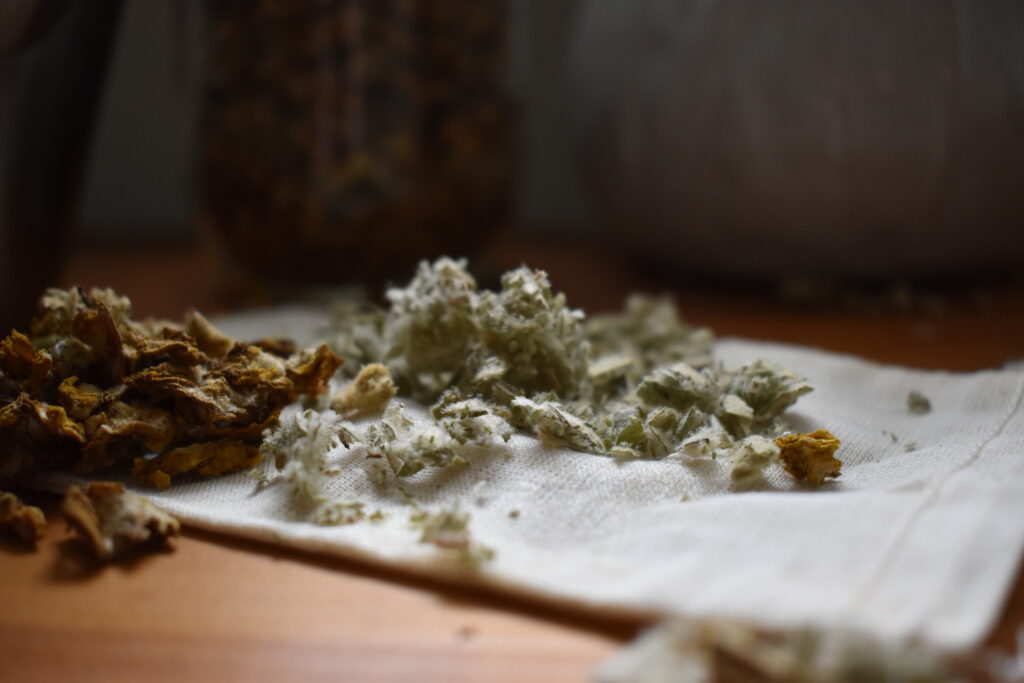
Respiratory support
In traditional parlance, mullein is moistening and relaxing. It returns moisture to tissues that are dry. Examples of the traditional times to use mullein include dry, tickly coughs or dry, harsh coughs and allergies with a “stuffed” feeling in the head or sinus pressure (Wood, 2008) In traditional settings, mullein provides support for many illnesses that impact the lungs and was believed to have a nourishing and strengthening affinity for the respiratory tract. (Wood, 2008)
Mullein uses for musculoskeletal support
Herbalist Matthew Wood uses mullein for musculoskeletal support. According to Wood, mullein is useful when there is pain and stiffness resulting from a lack of lubrication in the joints. Because of mullein’s affinity for the nerves, he finds mullein especially supportive for injuries to the spine, fingers, and toes.
Digestive support with mullein
According to King’s American Dispensatory, traditional Western herbalists also used mullein for inflammatory bowel conditions and illnesses like dysentery, diarrhea, hemorrhoids, and ulcers (Felter & Llyod, 1898). They favored teas for internal use and topical poultices for hemorrhoids.
Mullein and immunity
Herbalist and doctor William Cook (1869) noted that mullein was useful for chronic abscesses and swollen lymph glands (Wood, 2008). Another mention of swollen glands is available in King’s, which states that poultices were applied to the neck for tonsillitis and mumps (Felter & Lloyd, 1989).
A modern look at mullein
Like their traditional counterparts, modern herbalists prize mullein for its versatility. Leaves, flowers, and roots are all useful as syrups, teas, poultices, infused oils, and salves.
Mullein oil is a must-have according to many modern herbalists. Interestingly, Felter’s The Eclectic Materia Medica throws shade on mullein oil. King’s American Dispensatory, on the other hand, disagrees with Felter and sides with modern herbalists.
Even though there are historic references for using the seeds (such as found in King’s), most modern herbalists avoid them. Mullein seeds contain rotenone, which is a fish poison and insecticide (Riaz et al, 2013). Herbalist Ryan Drum has more information about mullein and rotenone on his website.
More mullein resources
Still curious about mullein? Enjoy these articles here on the blog!
When to harvest mullein flowers, leaves, and roots
References
Hoffman, D. (2003). Medical Herbalism: the science and practice of herbal medicine. Rochester. Healing Arts Press.
Felter, H.W., Lloyd, J.U. (1898). King’s American Dispensatory. https://www.henriettes-herb.com/eclectic/kings/verbascum.html
Felter, H. (1922) The eclectic materia medica, pharmacology and therapeutics. https://www.henriettes-herb.com/eclectic/felter/verbascum-thap.html
Muhammad, R., Muhammad, Z., Jaafar, H. (2013) Common mullein, pharmacological and chemical aspects. Revista Brasileira de Farmacognosia. Vol 23, Issue 6. https://www.sciencedirect.com/science/article/pii/S0102695X13701261
Wood, M. (2008) The Earthwise Herbal: A complete guide to old world medicinal plants. Berkeley. North Atlantic Books.
Where to find mullein
Mullein seeds for sale at Strictly Medicinal Seeds (so you can grow your own)
Mullein flowers for sale at Mountain Rose Herbs (#affiliate)
Dried mullein leaf for sale at Mountain Rose Herbs (#affiliate)
